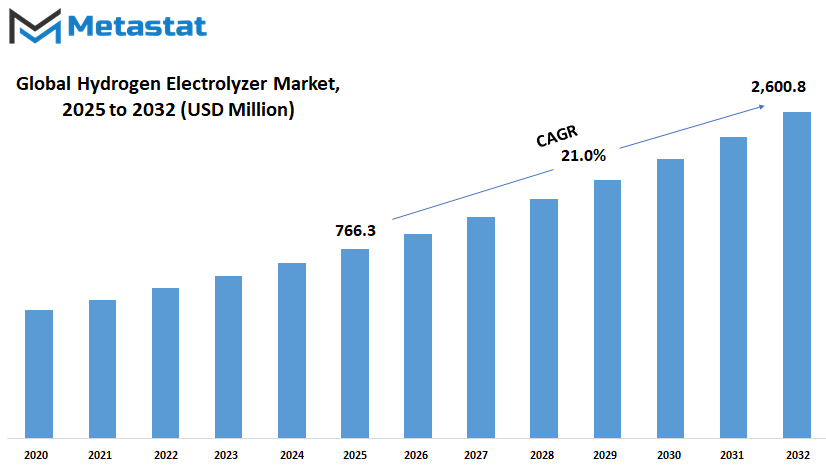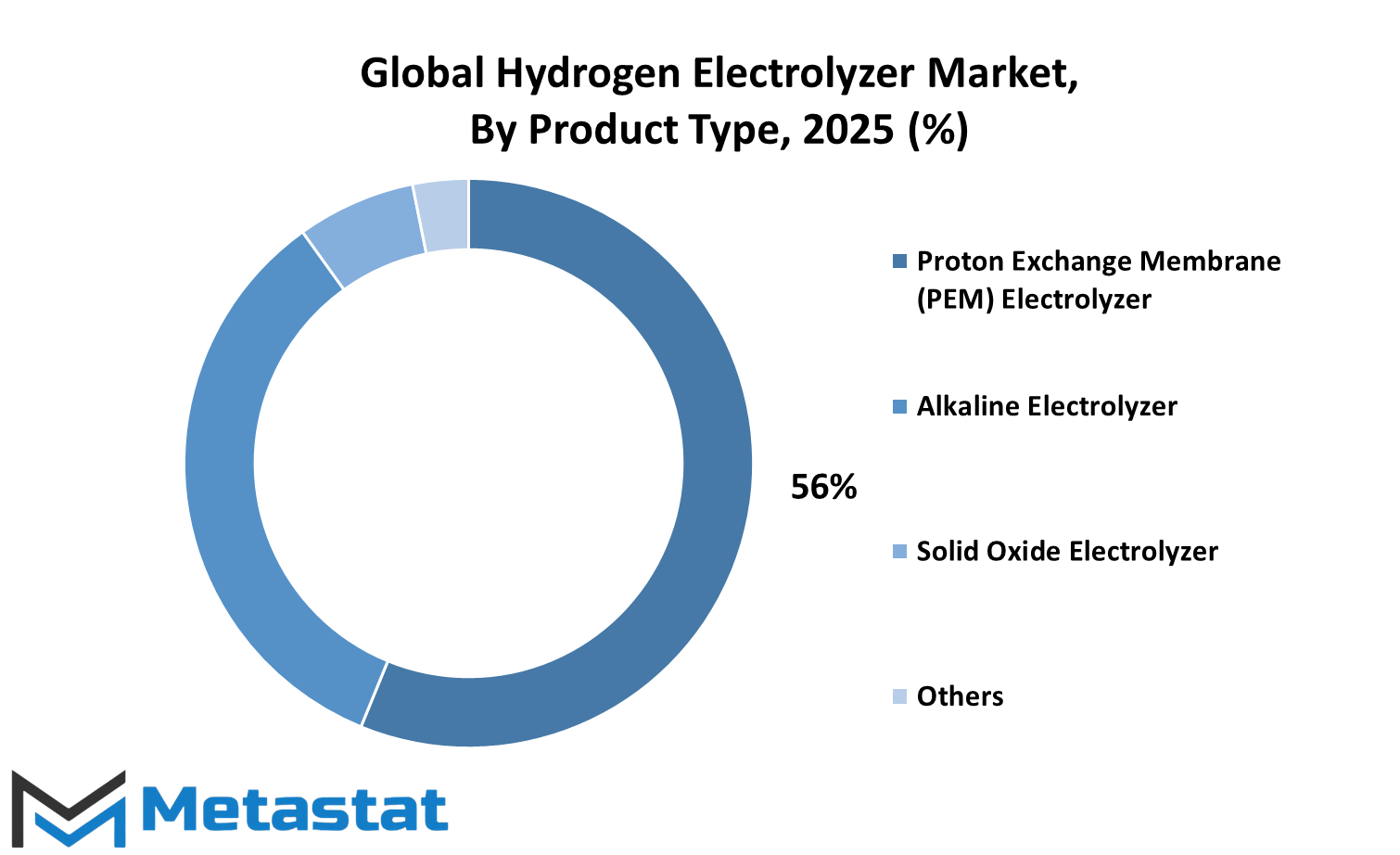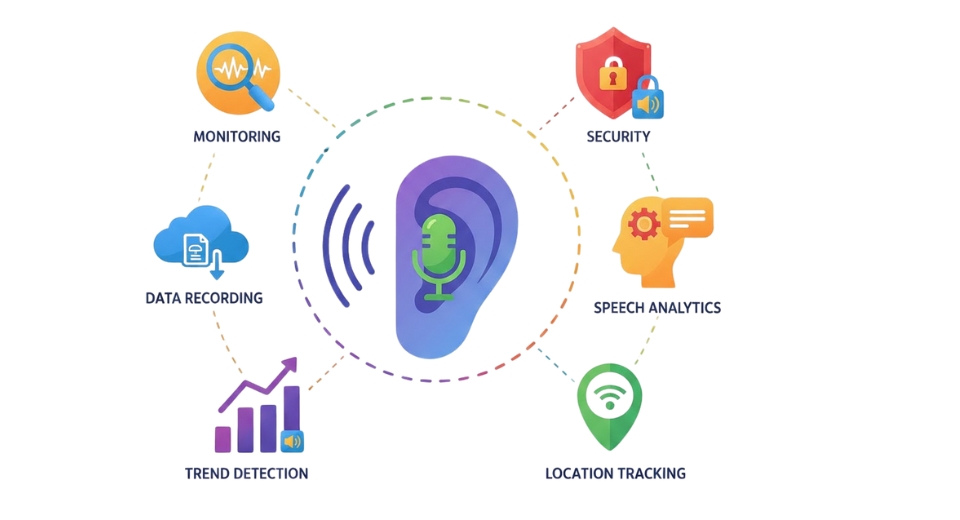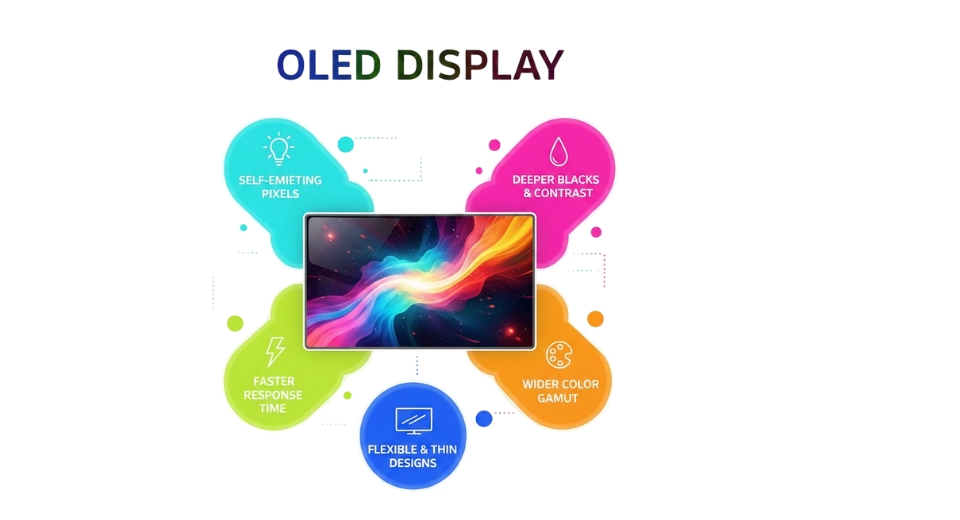MARKET OVERVIEW
The global Hydrogen Electrolyzer markets will experience different growth trajectories under regional policies and infrastructure development as well as energy needs. Europe, amid tight environmental laws and robust government incentives for attaining a carbon-neutral status, will likely top consumption in the market. For instance, Germany, France, and the Netherlands already have ambitious hydrogen strategies that will provide a demand basis for electrolyzers. In Japan, South Korea, and China, significant investments have been into hydrogen infrastructure to get some ground in the future energy mix. North America, consisting of the United States and Canada, will start off slowly to blend hydrogen development capacities in those areas rich in renewable energy sources.
The diverse businesses will cover the transport, industrial energy, power generation, and residential applications of hydrogen electrolyzer markets across the globe. Most decarbonized transportation will probably rely on electrolyzer-powered hydrogen fuel cells to fuel heavy-duty vehicles, buses and trains. High-temperature necessary processes of industry using energy will become hydrogen application for steel and chemical manufacture processes, as classic electrification will no longer reside with the tools they need. The production sectors will factor hydrogen as an option of storing energy to balance supply and demand fluctuations that beset renewable sources like wind and solar. Slowly, even the domestic sector would embrace hydrogen technologies, especially in the off-grid and remote areas.
Hyrogen Electrolyzers is one of the growing sectors in the renewables. The global industries have been craving to find these sustainable energy solutions from matured electrolysis plant constructs that would develop, manufacture and deploy hydrogen electrolyzers, which are electrically operated devices that split water to produce hydrogen and oxygen. Hydrogen thus declared clean and efficient by itself.
There are three types of hydrogen electrolyzers: alkaline, proton exchange membrane (PEM), and solid oxide. The merits are application-oriented. Alkaline electrolyzers are renowned for robustness, cost effectiveness and have been on the market for many years. Application-flexible and efficient type is PE, owing to its compact size and fast response. Although still developing, solid oxide electrolyzers promise higher efficiencies by operating at elevated temperatures. The technology distinction will keep global Hydrogen Electrolyzer market dynamic as companies innovate to meet different energy demands.
Slowly define the markets in which the strategic alliances among selected players may thrive assisted by technology and regulation. New breakthroughs in materials science will translate into longer life and efficiency of electrolyzers, hence making it very competitive in terms of price compared to conventional sources of energy. The regulatory background, in particular the pro-green hydrogen policies, will set the acceptance stage for hydrogen's larger commercial deployment. In addition, cross-governmental agreements between governments and partnerships with private enterprises and research entities will accelerate the commercial deployment of hydrogen-based technologies into the market.
The Hydrogen Electrolyzer market is increasing in importance in the global redistribution as the world moves toward a future dominated by greener energy. Other than technology advancement ceaselessly, supportive policies, coupled with increasing environmental consciousness, shall be the forces with which much life is injected into this market. All in all, hydrogen shall not just constitute a clean fuel alternative but also underpin this resilient and diversified energy ecosystem in the near future.

GROWTH FACTORS
The hydrogen electrolyzer market is about to boom significantly in the coming years, considering the trends that herald a future increasingly clean energy-based. The main reason for this growth is increasing demand for different sustainable sources of energy. World countries are committing to the reduction of carbon emissions and reaching the net-zero target, and hydrogen has emerged as a significant contribution to the transference from fossil fuels. Governments and the private sector are now investing heavily in renewable energy infrastructure, and hydrogen electrolyzers are critical for green hydrogen which is generated through renewable electricity sources such as wind and solar energy.
Another effective driver within the growth of the global Hydrogen Electrolyzer market is technological advancement. Continuous innovations tend to make the electrolyzers both more efficient and cost-effective. Better system designs, improved materials, and advancements in automation all help reduce the costs incurred during the operational production of hydrogen. As these technologies become ever-cheap, adoption in various different industries, including transportation, manufacturing, and energy storage, will be immediate. All this will provide a doorway for new access into the market and integration with the existing energy system.
Further front-line demand has been supported from hydrogen electrolyzers through the transport sector. Electric vehicles were, in fact, being pushed away to hydrogen fuel cell vehicles. These types of vehicles not only travel longer distances but also require shorter refueling times than their battery-electric counterparts, rendering it a viable option to any industry needing energy density. With continued growth of refueling stations for hydrogen, production of this fuel will have a concomitant demand, thus feeding into the global Hydrogen Electrolyzer market.
Beyond transportation, industries have also started using hydrogen to decarbonize processes earlier dependent on fossil fuels. The steel, chemicals, and refining industries are now exploring substitution sources through a significant replacement for green hydrogen from their traditional CO2-emitting practices. The flexibility of hydrogen for applications in these sectors has prompted many companies to adopt these solutions, enabled by compliance with environmental regulations and sustainability objectives; industrial switching will thus determine the growth patterns in the global hydrogen electrolyzer market.
A major factor that has catalyzed growth is indeed international cooperation and friendly domestic policies towards hydrogen technologies. By enacting incentives and subsidies in a way that encourages such countries to embrace hydrogen, the governments have made big strides in making hydrogen their thing. Partnering inter-government and corporate helps build international supply chains that make hydrogen easy to produce and distribute.
MARKET SEGMENTATION
By Product Type
Consequently, the Global Hydrogen Electrolyzer market is much decluttered as of now, and segmentation for product-type could help in understanding the dynamics in future. Moving forward, it is most likely Proton Exchange Membrane (PEM) Electrolyze to witness maximum growth opportunity and will be expected to reach tremendous Compound Annual Growth Rate (CAGR) of 21.2% during 2025-2032.
In the year 2022, the Alkaline Electrolyzer segment constituted 34% Hydrogen Electrolyzer Market share. The report projects the segment to continue its growth streak from 2025 to 2032 which will end at a value of 683.3 million dollar by 2032. However, the Major Solid Oxide Electrolyzer segment accrued a whopping figure of 31 million USD until 2022. It is also expected that this segment will continue its hefty growth and is forecasted for 2025-2032.
Apart from all of these types, there are a few more product categories comprising several other types of electrolyzer technologies, such as Anion Exchange Membrane (AEM), Molten Carbonate Electrolyzer (MCE), and others. 14.5 million dollars accounted for this segment in 2022. The growth trajectory still has an optimistic outlook.

By Capacity
Asia and the European region have made significant commitments towards meeting the hydrogen energy demand in the near future. Hydrogen electrolyzers are used for splitting water into hydrogen and oxygen using electric power with renewable source power, such as from wind and solar, and will form the basis for producing green hydrogen, thus intending to eradicate the use of fossil fuels for energy generation. As more and more countries build their sustainable energy infrastructure for promising carbon neutrality, increased use of efficient and scalable hydrogen production technologies will be needed.
The global Hydrogen Electrolyzer market could be segmented into three segments based on capacity: low (≤150 kW), medium (150 kW- 1 MW), and high (>1 MW). Each category is expected to grow, albeit for different applications and drivers. Low capacity electrolyzers are for small-scale applications, such as research laboratory or pilot projects, for making hydrogen available on site. They will be found in industries that test hydrogen for use as an energy source. However, even such small systems will become efficient and cost effective with the advancement of technology resulting in their application in niche markets.
It will serve the small quantities of hydrogen needed, for example, in refueling stations for fuel cell vehicles, or for small industrial processes. It is expected to grow well with the burgeoning of the transportation sector, especially in hydrogen-powered vehicles. Governments and private companies are also going to invest heavily in hydrogen infrastructure like refueling stations to promote clean transportation. It will drive demand for medium-capacity electrolyzers, striking a balance between efficiency and scalability.
High capacity i.e. above 1 MW will be the most dynamic area in the global Hydrogen Electrolyzer market. This is because of the huge industrial applications for steel production, chemical manufacturing, and large-scale energy storage. High-capacity electrolyzers appear as an answer to the industries' concern about decarbonizing operations while producing very large quantities of what would be termed as "green" hydrogen for replacing fossil fuels in energy-intensive processes. Furthermore, high-capacity electrolyzers will be more increasingly relied upon for storing large excess energy in hydrogen and thus creating a sustainable energy loop by countries investing into massive renewable energy power projects.
In short, technological advancement, declining production costs, and government policies around the world would continue to play a significant role in the shaping of the global Hydrogen Electrolyzer market in the coming years. In this context, hydrogen is expected to be the answer for energy solutions in a clean energy-conscious world.
By Outlet Pressure
The global hydrogen electrolyzer market is forecasted for tremendous growth, owing to the demand for clean energy solutions and the worldwide reduction grip on carbon emissions. As industries and governments worldwide promote sustainable energy alternatives, hydrogen appears a promising candidate because of its clean fuel potential. At the center of this transition are hydrogen electrolyzers that generate hydrogen by electrolysis of water. An electrolyzer splits water into hydrogen and oxygen by utilizing electricity preferably from renewable sources like solar and wind, thus generating green hydrogen in a highly efficient way.
The market growth for Hydrogen Electrolyzers is massively dependent on various outlet pressures provided by the systems. Electrolyzers are mostly categorized according to their outlet pressure low (≤ 10 Bar), medium (150 Bar to 40 Bar), and high (> 40 Bar). Each pressure serves certain industrial requirements with most low-pressure electrolyzers mostly being used for small use whether in small-scale labs while medium and high-pressure systems are more suited for use in larger industrial processes, storage, and logistics.
High-pressure electrolyzers are becoming increasingly in demand because they allow a more energy-efficient manner of the storage and transportation of hydrogen. For example, hydrogen in a high-pressure form will not require extensive compression, saving costs and improving energy efficiency. Therefore, this becomes attractive for the transportation segment, where hydrogen fuel cells slowly act as a serious competition to fossil fuels. Medium-pressure electrolyzers also hold considerable shares, especially in industries where hydrogen is used on-site to service chemical production or refining processes.
The future of the global Hydrogen Electrolyzer market will be built upon the improvement of technology that increases efficiency, limits cost, and widens applications. Incentive and subsidy initiatives are also expected to proceed to stimulate hydrogen technologies, which would further enhance demand within the respective market. Lastly, breakthroughs in the design of electrolyzers improving hydrogen evolution for all the pressure category will also come into effect due to collaborative efforts between private companies and research institutions.
Unsurprisingly, the global hydrogen electrolyzer market is bound to significantly prosper through clean energy demand and technological advancements. The focus on different outlet pressures will determine how these systems will find application across industries and promise a cleaner and brighter hydrogen future.
By End Use
The global Hydrogen Electrolyzer market is, thus, about to be a huge market due to the growing demands for clean energy solutions and sustainable alternatives. While industries are in need of carbon emission control, here comes hydrogen as part of the emerging transition towards more eco-friendly substitutes. Being in high demand, the hydrogen generation process is now cheaper and more efficient due to the rapid technological advancement being witnessed in the electrolyzers, machines used to run an electric current through water in order to separate it into hydrogen and oxygen.
Applications of hydrogen electrolyzers will be vast, involving mainly ammonia and methanol production. These chemicals are necessary for fertilizers and many industrial processes and, thus, the use of green hydrogen can really help cut down their environmental burden. Hydrogen offers the way to allow for environmental consideration of refining and other hydrocarbon industry processes, particularly in this instance of desulfurizing, applying hydrogen to remove sulfur from the fuels. Hydrogen production for ultra-pure gases will offer the electronics industry improvements in semiconductors and other high-quality materials needed.
The energy, power, and gas sectors are going to be some of the most significant contributors towards the global Hydrogen Electrolyzer market's growth. In return, hydrogen should, therefore, act as a fuel and a storage medium to balance energy grids and store excess generated power from solar or wind into renewable energy. This transition captures the transport sector, for it is hydrogen fuel cells that would replace fossil fuels for transport especially for heavy-duty transport where battery technology would not perform well.
It follows that hydrogen can also substitute, in metal production and fabrication, carbon caste process; thus the cleaner alternative for steel manufacture can be made possible through it. The pharmaceutical and biotechnology sectors will use hydrogen under various applications in the manufacture of chemicals and materials for some chemical production. Hydrogen can be used in the food and beverage industry for various applications requiring a controlled atmosphere, while in the glass industry, hydrogen is critical for heating high-temperature clean-burning flames.
Expansion of the vibrant Hydrogen Electrolyzer market will materialize from industries searching for innovative ways of achieving environmental goals. As electrolyzer research progresses, with improvements in developments, hydrogen will become more cost-competitive in the international energy scene. The cross-sectional acceptability from different industries, yet again, guarantees hydrogen a seat in the future of the clean economy.
|
Forecast Period |
2025-2032 |
|
Market Size in 2025 |
$766.3 million |
|
Market Size by 2032 |
$2,600.8 Million |
|
Growth Rate from 2025 to 2032 |
21.0% |
|
Base Year |
2024 |
|
Regions Covered |
North America, Europe, Asia-Pacific, South America, Middle East & Africa |
REGIONAL ANALYSIS
The Hydrogen Electrolyzer market is going to witness a prominent growth curve between the years 2025-2029. It is expected that North America would have the largest difference with regard to percentage increases among all the regions. The growth rate for the market is expected to jump by 21%. Investments in clean energy and their government policies are among the baselines responsible for the surge. Most have relied on technology advanced devices to reduce the carbon footprint and augment this surge. This is going to be mainly for the United States and Canada, considering their infrastructure strength and commitment towards achievement of sustainable energy goals.
North America is not the only one marking its growth, but Europe is also a bigger figure in the global Hydrogen Electrolyzer market. Currently, before countries like Germany, France and the United Kingdom, strong regulatory framework and ambitious environmental targets are present in the countries as well, to be led and spurred further following. Hence, even in the future, Europe should continue to hold an edge going into the near future for further fuel to this push for green hydrogen in the energy transition for the EU region. Meanwhile, R&D investments are accelerating, with the engagement of the government in the private industry players fueling the march in Europe.
The Hydrogen Electrolyzer will become another major market in the Asia-Pacific area. Countries like China, Japan, South Korea, and India are heavily investing in hydrogen technology to satisfy the energy security and environmental needs they have. China claims to become the world's greatest renewable energy technologies nation, along with concerns regarding the long-term hydrogen strategy of Japan and South Korea's drive for hydrogen-powered transportation. Furthermore, India's interest in green hydrogen is moving with new government initiatives combined with business participation. This adds even more vigor to the growing influence of fortifying our analysis, namely the Asia-Pacific region.
While it is not growing fast yet as the rest of the regions, promises abound for South America, especially in the countries such as Brazil and Argentina exploring hydrogen as a solution to diversify their energy mix and to reduce their dependence on traditional fossil fuels. South America has immense renewable resources and promises to be a significant player in hydrogen production in the future.
It is also the region of the Middle East & Africa, where opportunities for growth in market terms are present for the Hydrogen Electrolyzer. Countries of the GCC such as Saudi Arabia and UAE have started projects for green hydrogen generation as a part of their broader strategies to diversify their economies away from oil. Countries like Egypt and South Africa are looking into hydrogen as a means to enhance the energy security and support for sustainable development goals. Thus, with increasing investment toward renewable energy infrastructure in these regions, their participation in the global Hydrogen Electrolyzer market will become more prominent.
COMPETITIVE PLAYERS
The Hydrogen Electrolyzer market is poised to ascend very rapidly around the globe as the demand for clean and sustainable sources of energy is ever increasing. The companies worldwide compete against each other in the development of better technologies in making hydrogen production more efficient and cost-effective. Players defining this market include Nel Hydrogen, Siemens Energy AG, McPhy Energy S.A., ITM Power plc, and Tianjin Mainland Hydrogen Equipment Co., Ltd. These companies are increasing their production capacity and also investing large amounts of resources into R&D to improve electrolyzer efficiency and durability.
With the greener energy solutions being promoted by the world, Elogen, Ohmium International, Inc., and Green Hydrogen Systems A/S are racing toward better technologies. The aforementioned companies are trying to increase the scalability of the electrolyzers due to the growing industrial demand for hydrogen. In contrast, iGas energy GmbH and Beijing Zhongdian Fengye Technology Development Co., Ltd. are pursuing regional expansion strategies to capitalize on new markets, while Next Hydrogen Solutions Inc. and Air Liquide S.A. align themselves with relevant partnerships for strengthening their market presence.
The Hydrogen companies on their path of re-newing innovation boundaries are doing thus with the new products being launched, including pilot projects to demonstrate the robust application of hydrogen in various sectors. Pure Energy Centre and Shandong Saikesaisi Hydrogen Energy Co., Ltd. are diversifying hydrogen production technologies, thus ensuring varying hydrogen solutions for differing industries in their various activities. Idroenergy Erredue SpA; SwissHydrogen SA are research and development the environment footprint of hydrogen production on the path to sustainable practices leading towards global climate goals.
Brise Chemical, Sunfire GmbH are applying methods of production optimization and a diversity of materials to further drive cost and workload reduction in the market. Cummins Inc (Accelera), ERGOSUP, and H-TEC SYSTEMS GmbH are pooling their collective capability to usher in the change that drives the hydrogen economy into the market. Hysata, Hyvia, and Infineon Technologies AG must showcase the utmost technological innovation to challenge hydrogen production to its very limits.
As the global market for Hydrogen Electrolyzer continues to grow, these competitive players will play a key role in shaping the future of clean energy. Their paths to innovation, collaboration, and scaling their production capacity will be essential for the growth that further drives the green energy agenda.
Hydrogen Electrolyzer Market Key Segments:
By Product Type
- Proton Exchange Membrane (PEM) Electrolyzer
- Alkaline Electrolyzer
- Solid Oxide Electrolyzer
- Others
By End Use
- Ammonia and Methanol
- Refining/ Hydrocarbon
- Electronics
- Energy, Power, and Gas
- Transport
- Metal Production & Fabrication
- Pharma & Biotech
- Food & Beverages
- Glass Industry
- Others
Key Global Hydrogen Electrolyzer Industry Players
- Nel Hydrogen
- Siemens Energy AG
- McPhy Energy S.A.
- ITM Power plc
- Tianjin Mainland Hydrogen Equipment Co., Ltd.
- Halogen
- Ohmium International, Inc.
- Green Hydrogen Systems A/S
- iGas energy GmbH
- Beijing Zhongdian Fengye Technology Development Co., Ltd.
- Next Hydrogen Solutions Inc.
- Air Liquide S.A.
- Adapter
- Plug Power Inc.
- Bloom Energy
WHAT REPORT PROVIDES
- Full in-depth analysis of the parent Industry
- Important changes in the market and its dynamics
- Segmentation details of the market
- Former, ongoing, and projected market analysis in terms of volume and value
- Assessment of niche industry developments
- Market share analysis
- Key strategies of major players
- Emerging segments and regional growth potential








 US: +1 3023308252
US: +1 3023308252






